Key takeaways:
- A book proposal is crucial for creating a strong first impression and outlines the vision, target audience, and marketing strategy for your book.
- Researching your target audience and analyzing competing titles is essential for developing a focused proposal that resonates with readers.
- Structuring your proposal clearly and including a compelling pitch can engage agents and publishers, turning your document into a persuasive narrative.
- Personalizing your proposal to align with the preferences of specific agents or publishers adds depth and showcases your unique voice as an author.
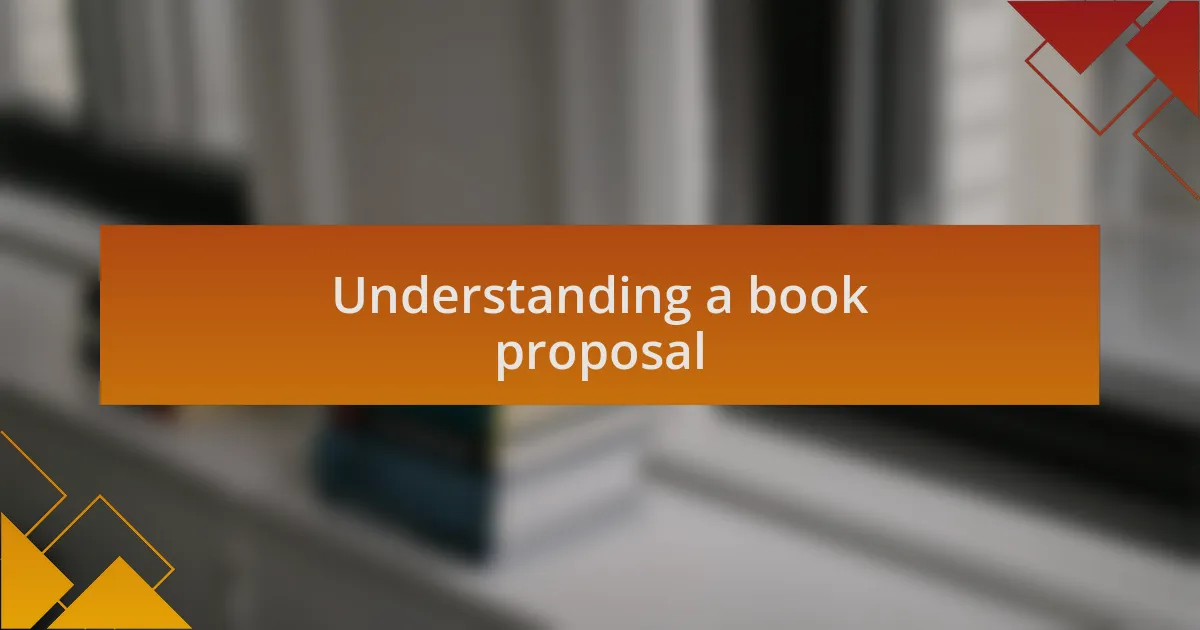
Understanding a book proposal
A book proposal serves as your project’s first impression, acting much like a resume but for your book idea. It’s not just a mere pitch; it’s a roadmap that outlines your vision, target audience, and marketing strategy. I remember when I first crafted my own proposal—what a blend of excitement and anxiety it was! How do you condense your passion for an entire book into just a few pages?
At its core, a book proposal explains why your book matters and who will want to read it. Consider it a conversation with a potential publisher, where you’re not only sharing what your book is about but also highlighting your unique perspective and qualifications. I often find myself reflecting on the deep connection I have with my subject matter—it’s vital to convey that in your proposal.
Don’t underestimate the importance of clarity and detail in your proposal. Clarity ensures your ideas are accessible, while details can paint a vivid picture of your book’s significance. I once had a mentor tell me, “Write your proposal with the same passion you’ll bring to writing the book itself.” Indeed, this emotional energy is infectious; it can compel others to believe in your project as much as you do.
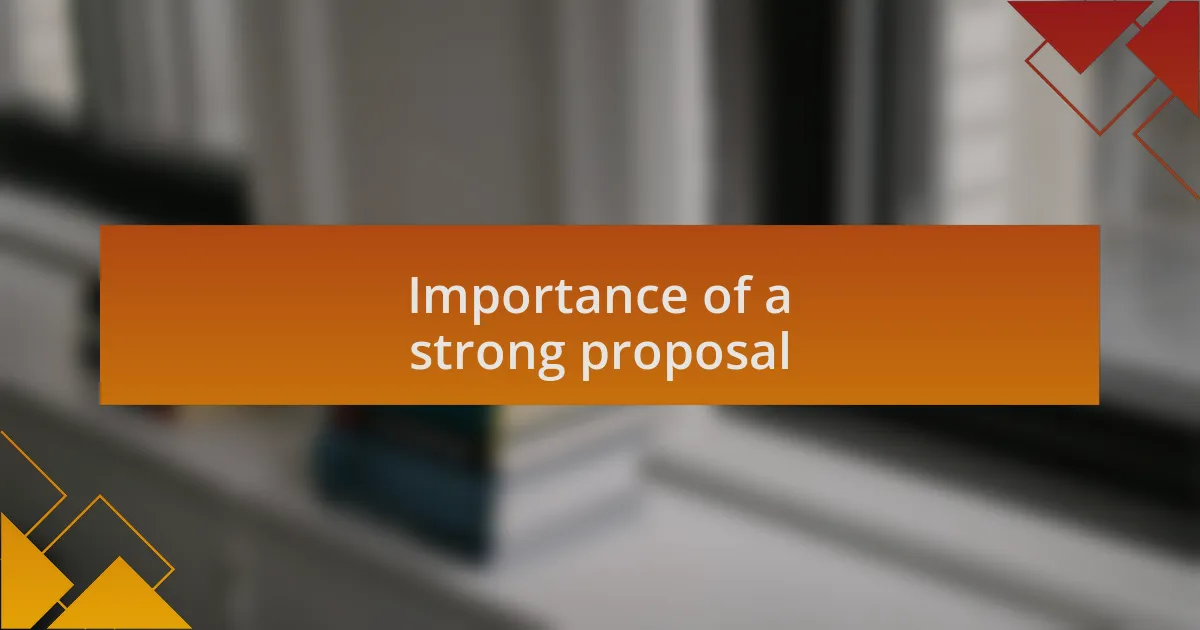
Importance of a strong proposal
A strong proposal acts as your unique selling point in a competitive marketplace. I remember submitting my first proposal filled with a mix of hope and anxiety, knowing that a well-crafted document could open doors I hadn’t even imagined. It’s incredible how a few carefully chosen words can persuade someone not only to consider your work but to champion it.
Detailing your market analysis here is crucial. Readers want to see that you have thought through who your audience is and how to reach them. I once included a unique angle that resonated with niche groups—something I had overlooked initially. The publisher’s excitement over that focused insight solidified for me that you can’t skip this part; it’s about showing you understand the landscape.
Moreover, a proposal showcases your professionalism and commitment to your craft. When I revisited my proposal after some feedback, I found areas to enhance not just clarity but also to inject my personality into it. It was like bringing my voice to life on the page. Why does this matter? Because a vibrant proposal can spark conversations and build relationships—both essential in the independent publishing world.
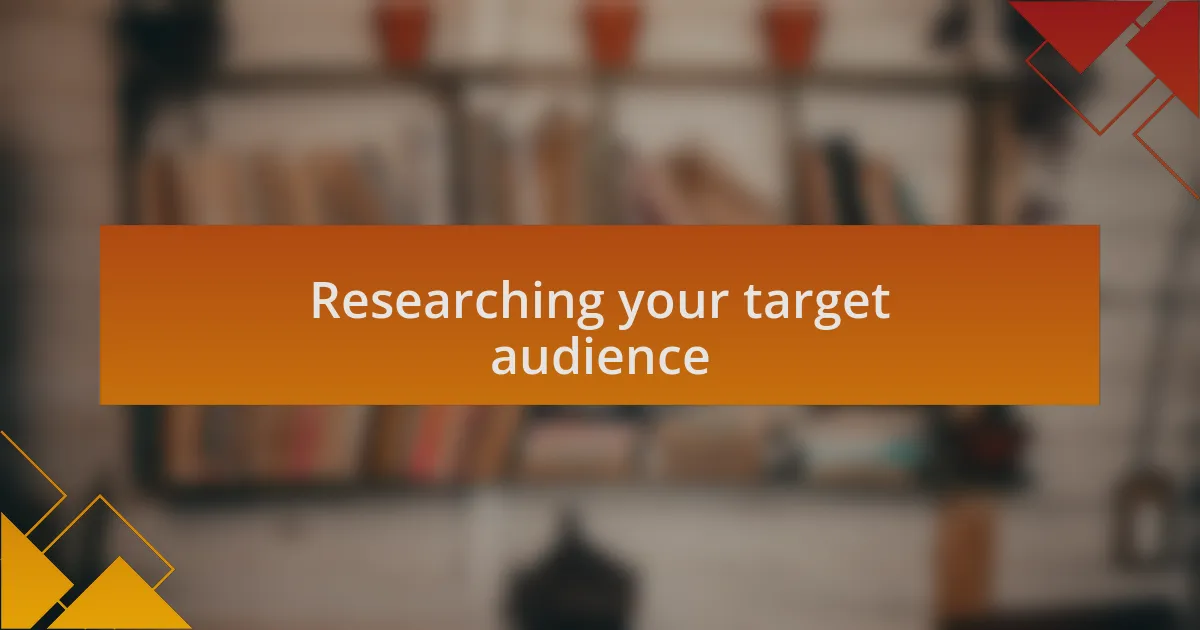
Researching your target audience
Understanding your target audience is like holding a compass while navigating uncharted waters. I recall the moment I realized my initial understanding of my audience was too broad. It was through refining my research that I stumbled upon a vibrant community of readers who craved a unique perspective. Have you thought about how narrowing your audience can actually broaden your book’s reach? By focusing on specific demographics or interests, you pave the way for more targeted marketing strategies.
Diving into social media platforms can be a goldmine for audience insights. I often glean inspiration from reader conversations on book-related forums. These discussions not only highlight what readers are passionate about but also reveal gaps in the market. Isn’t it fascinating how communities can shape your writing direction? Embracing these interactions allows you to tailor your proposal to include what truly matters to potential readers.
Lastly, examining competing titles is incredibly revealing. When I analyzed similar books in my genre, I uncovered patterns in reader reviews that guided my proposal’s direction. Authors who understood their audience’s pain points and desires thrived, while others with vague messaging struggled. It made me reflect—how well are you tuning into the voices of your potential readers? By wholeheartedly embracing this research process, you not only strengthen your proposal but also ensure your book resonates deeply with its intended audience.

Structuring your proposal effectively
Structuring your proposal effectively requires a clear outline that guides the reader through your vision. I remember when I first drafted my proposal, I simply dumped ideas onto the page without much organization. It felt overwhelming, both for me and anyone who might read it. Have you ever had that feeling of “what do I even say first?” Prioritizing sections like the pitch, market analysis, and author bio can help create a flow that makes it easier for agents and publishers to understand the value of your project.
As I refined my structure, I discovered that clearly defined headings and bullet points really made my proposal more user-friendly. It was like turning on a light in a dim room—everything became clearer. I found that a brief, concise summary at the beginning sets the stage, drawing readers in. Why not think of your proposal as a roadmap? Each section leads the reader to the next important milestone, making the journey through your ideas seamless.
I also learned the importance of including a compelling hook early in the proposal. I vividly remember the moment when my mentor advised me to start with a bold statement that reflected the heart of my book. It made my proposal feel alive. What if I told you that a captivating hook could be the difference between a quick glance or sustained interest? Ultimately, the structure of your proposal can be your greatest ally in communicating your book’s potential, turning a mere document into a persuasive narrative.
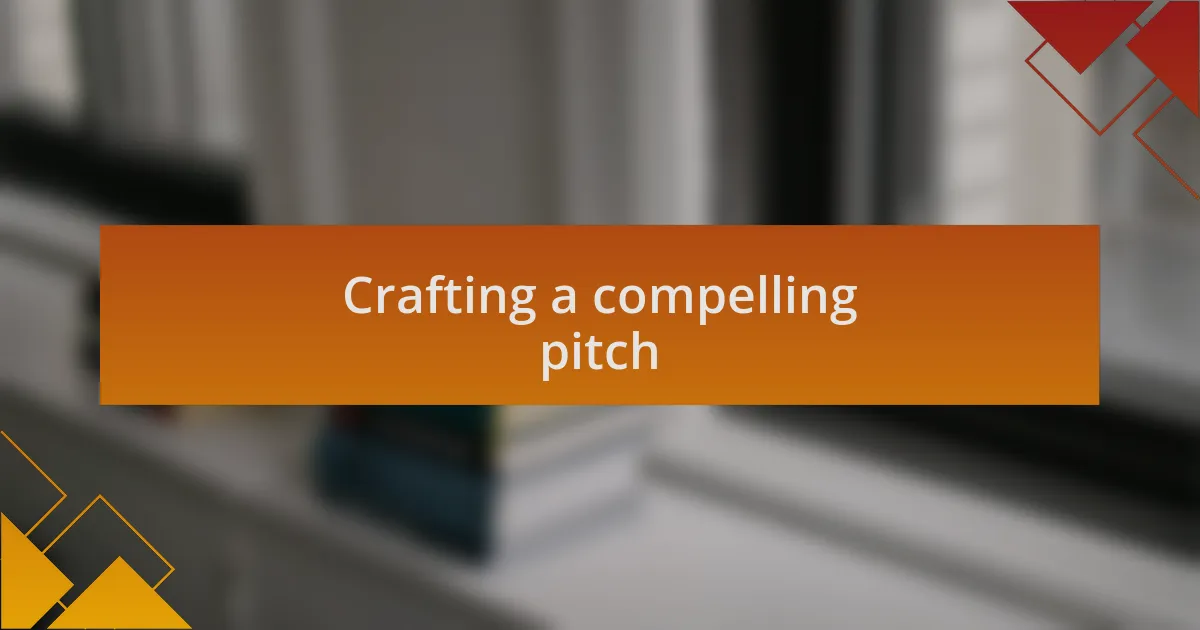
Crafting a compelling pitch
Crafting a pitch that captivates from the start is essential in grabbing the attention of agents or publishers. I recall my first attempt at writing a pitch; it was bland and almost forgettable, merely outlining the book without any flair. It hit me then: a pitch is more than just a summary; it’s an invitation. What story can my words tell that would resonate with their experiences or aspirations?
One strategy that truly transformed my pitches was focusing on emotional resonance. I started to infuse elements of my personal journey or the emotions behind my story. I remember weaving a sentence about a pivotal moment in my narrative that left me breathless, drawing in my reader immediately. The reaction was palpable—I could sense the intrigue. When you share genuine feelings, it not only humanizes your work but also builds a connection that statistics and facts can’t replicate.
Additionally, making sure to articulate the unique angle of your book is crucial. I learned the hard way that clarity is vital; I once saw my pitch get lost in jargon that felt impressive but ultimately muddied my message. Instead, I now focus on a clear and striking premise. Have you ever encountered a book idea that just clicked? That’s the kind of impact your pitch should aim for. A compelling pitch doesn’t just inform; it inspires curiosity and excitement—two key ingredients for any successful proposal.

Personalizing your proposal techniques
To make your proposal stand out, I found that tailoring it to the specific agent or publisher can really make a difference. I recall a time when I spent hours researching an agent’s previous works and preferences, which led me to mention how my book aligned with their published titles. It felt thrilling to draw that connection; I could almost hear them nodding in agreement as they read my proposal. Don’t you think showing that you’ve done your homework demonstrates respect for their time and interests?
Another technique that has worked wonders for me is incorporating small, personal touches. I once included a line about how my background inspired certain themes in my manuscript. It was a small detail, but it added depth to my proposal, allowing the reader to glimpse my passion. Have you ever felt a stronger connection to a story because of the author’s personal experiences? Sharing your motivations can bridge that gap between you and the reader.
Finally, consider the tone and language you use in your proposal. If you’re writing to a publisher known for its conversational style, mirror that in your writing. I learned this lesson firsthand when I shifted the tone of my proposals; they became more engaging, almost like a casual chat rather than a formal application. Wouldn’t you be more inclined to read something that feels inviting and relatable? Personalizing your approach in this way showcases not just your book, but also your unique voice as an author.
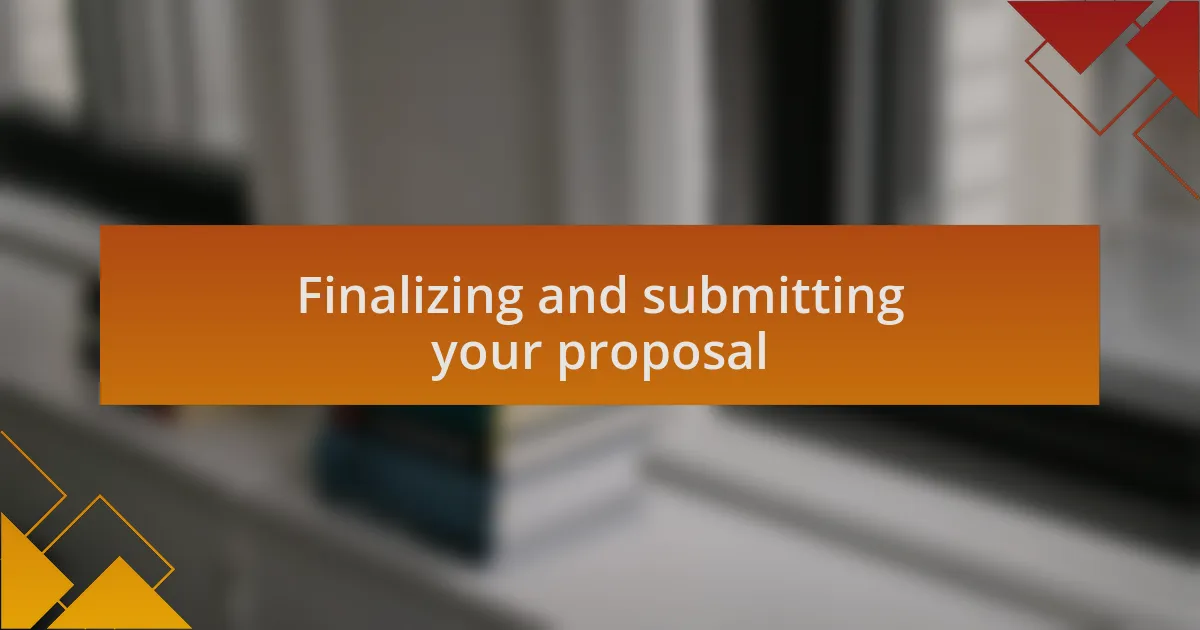
Finalizing and submitting your proposal
When it comes to finalizing your proposal, I always recommend taking a step back and giving it a thorough review. I recall the time I thought I was ready to submit, and then I noticed a couple of typos I’d overlooked. It was a reminder that even the tiniest mistake could undermine my professionalism. Have you ever had that sinking feeling of realizing an error just before hitting send?
Next, consider the format and submission guidelines. Each publisher or agent has specific requirements, and I once learned this the hard way when I submitted a proposal that didn’t align with their prescribed structure. I felt a pang of regret, but it was an invaluable lesson: following directions is not just a courtesy; it demonstrates that you’re serious about your proposal. Are you ready to ensure that your meticulously crafted work is presented in the best light possible?
Finally, when it comes time to submit, I always suggest including a brief, friendly cover letter. I’ve found that this adds a personal touch to your proposal, setting a welcoming tone right from the start. It’s a way to show your enthusiasm, which can be contagious; as they say, people want to work with those who are passionate about their projects. How would you feel if someone opened your submission with a warm, inviting note? It might just make all the difference.